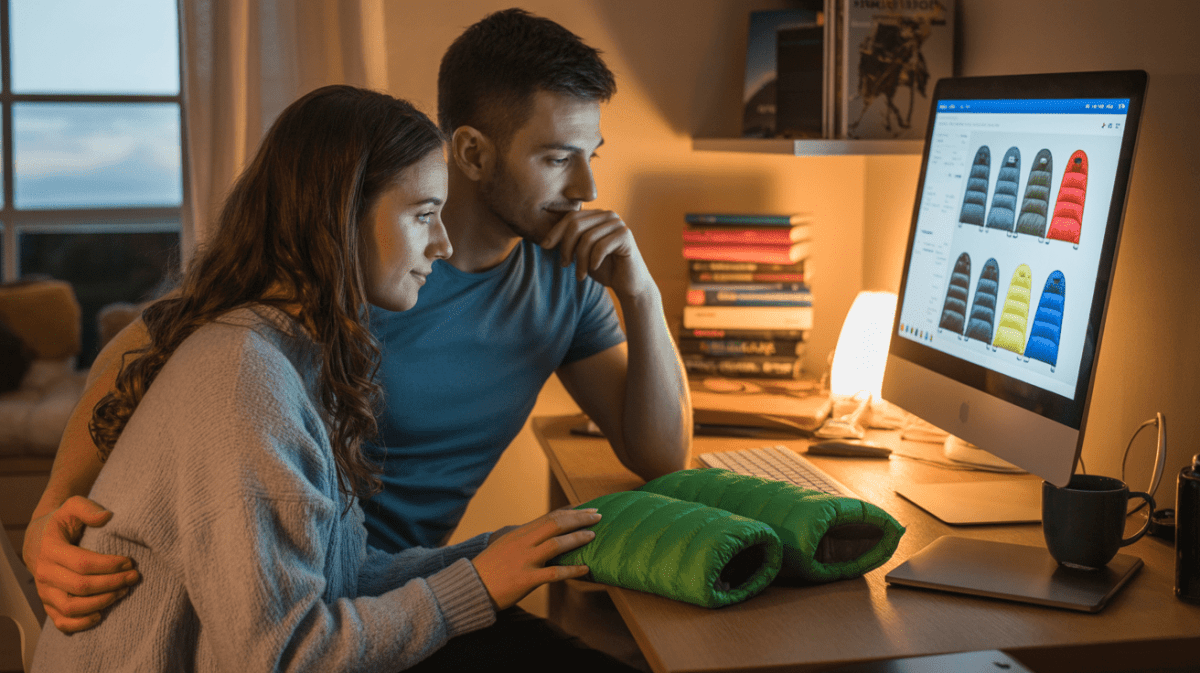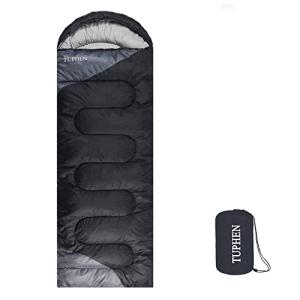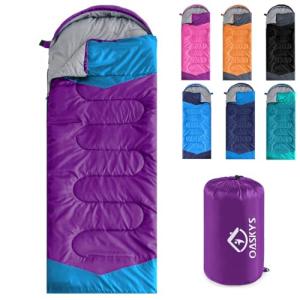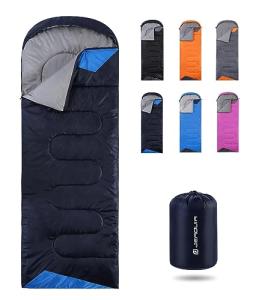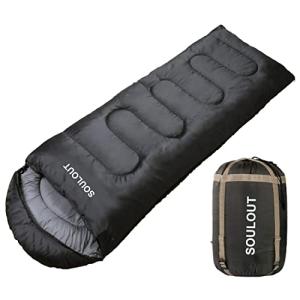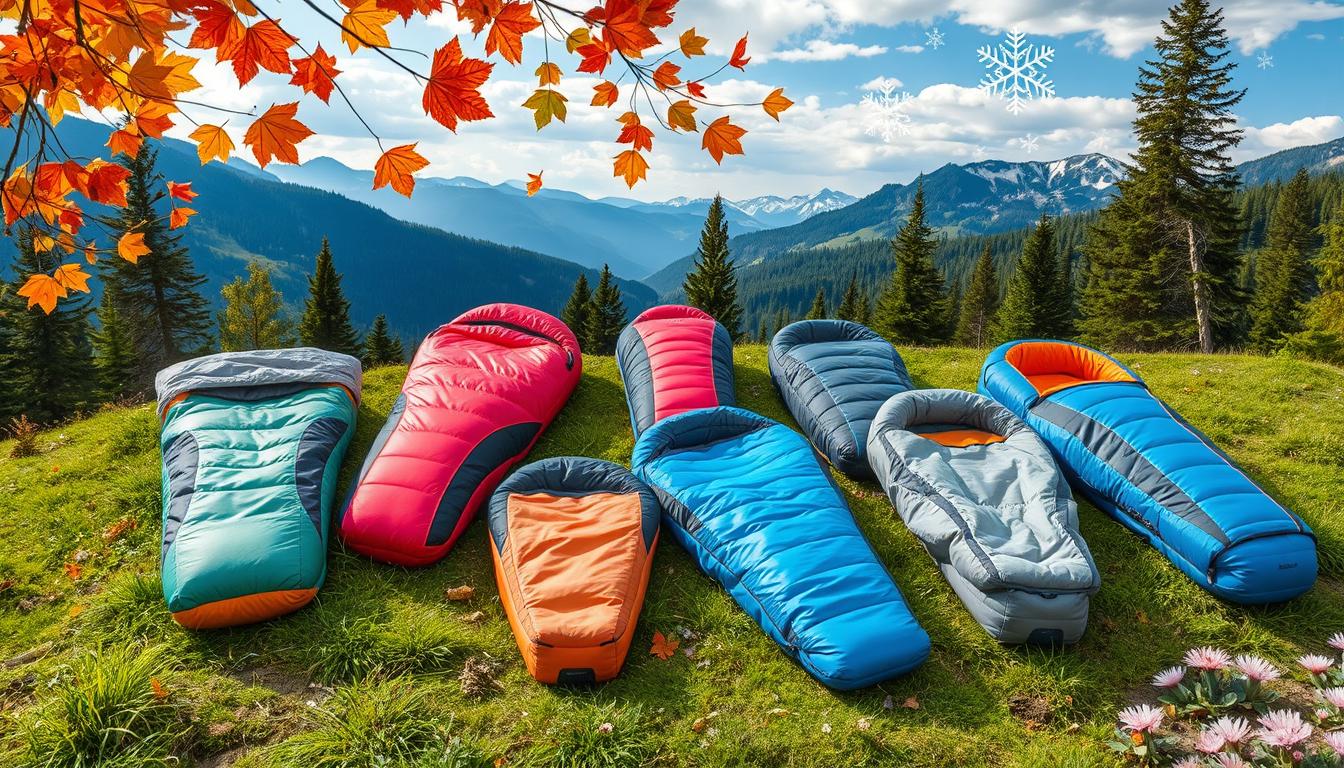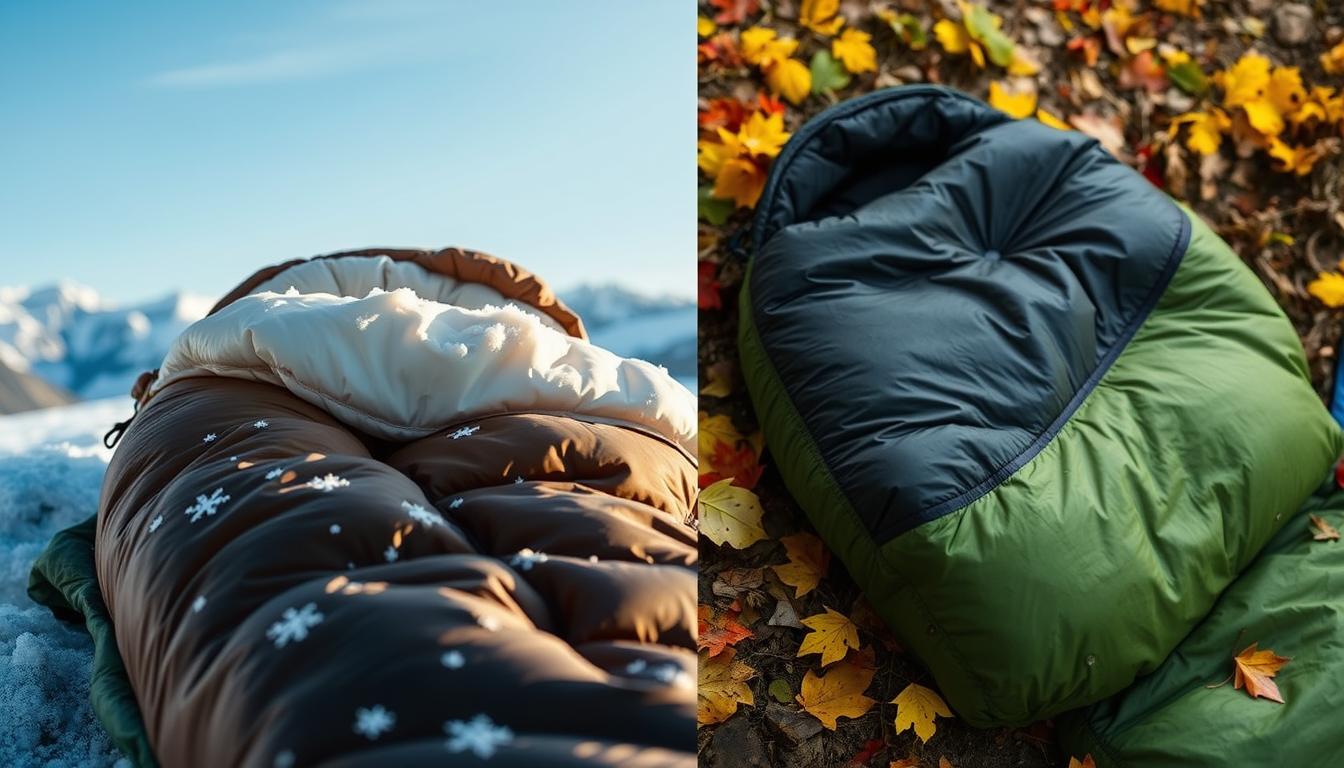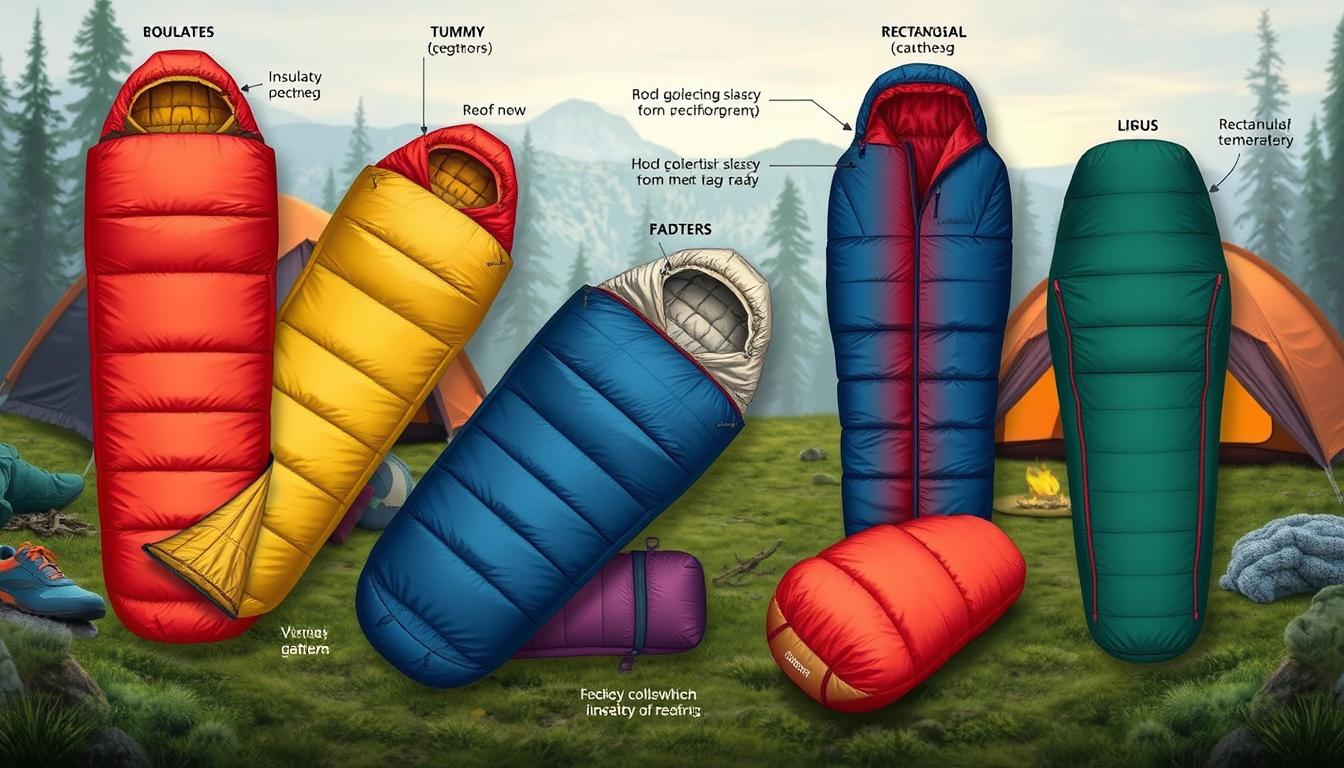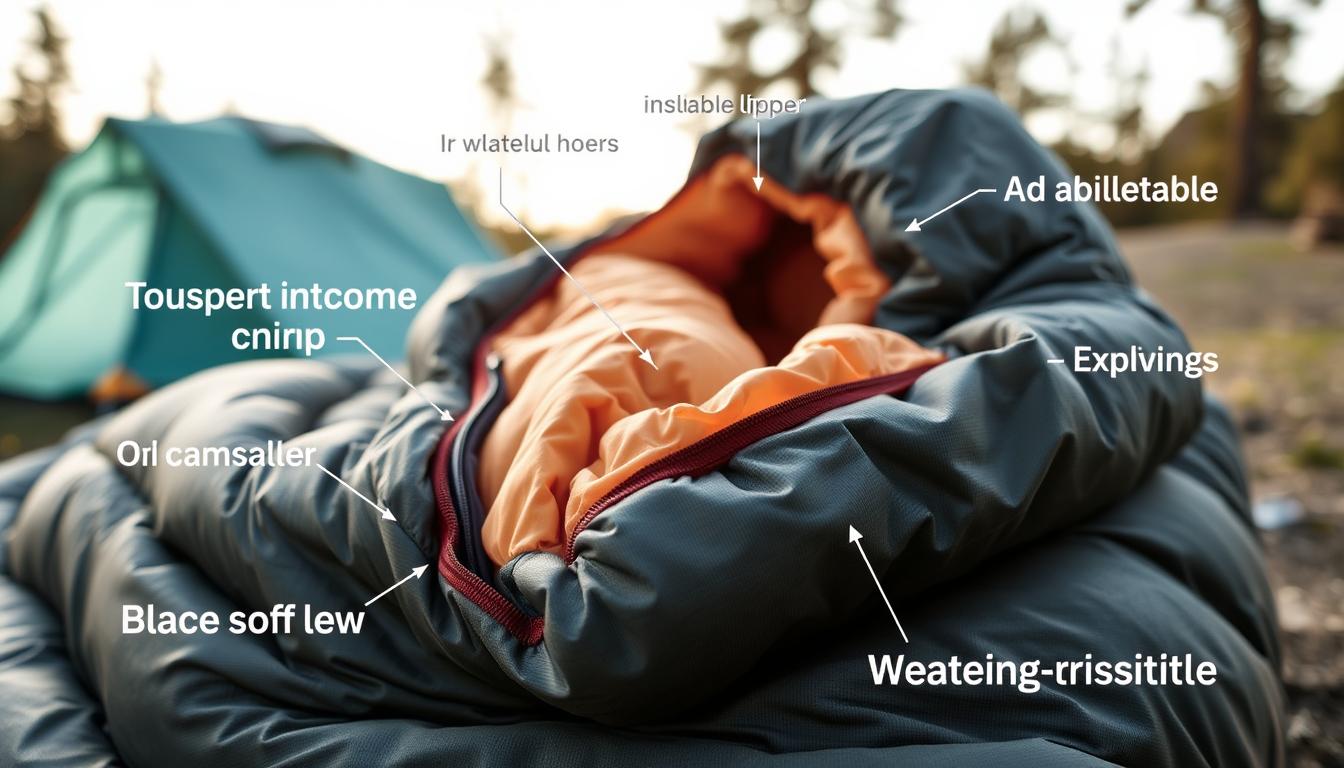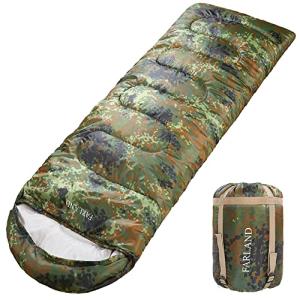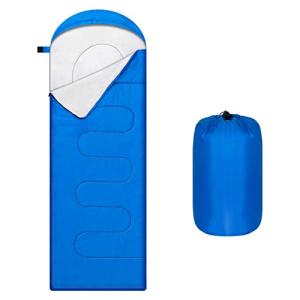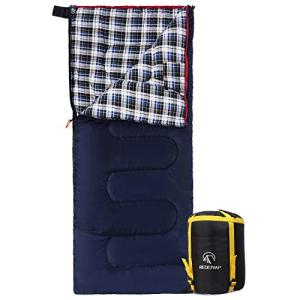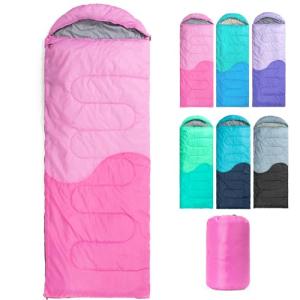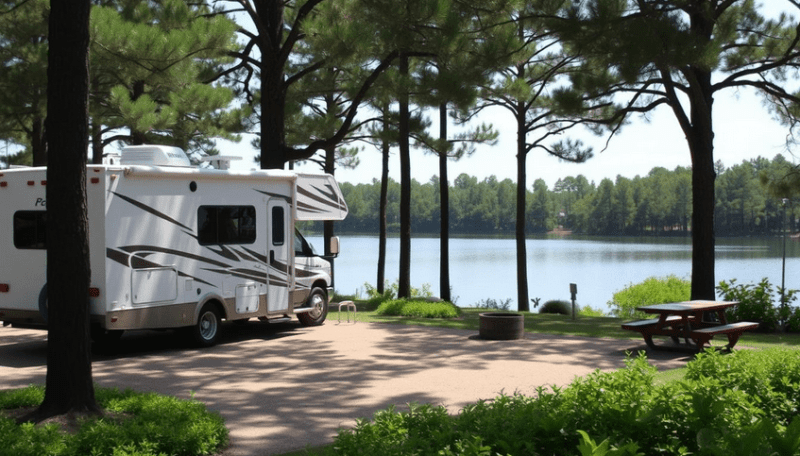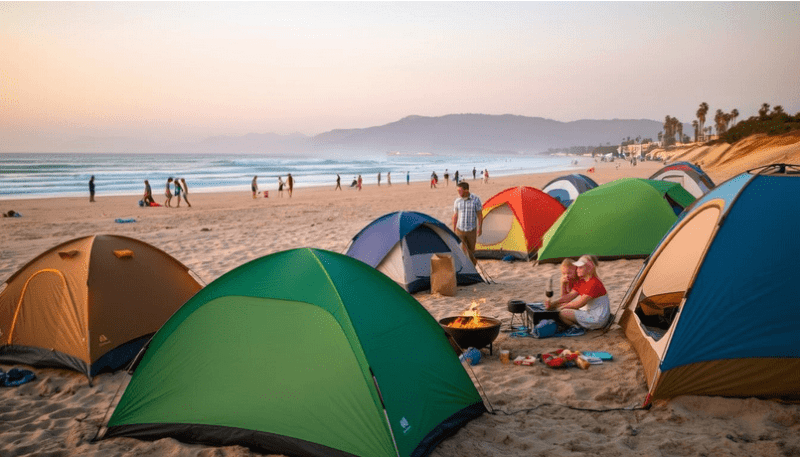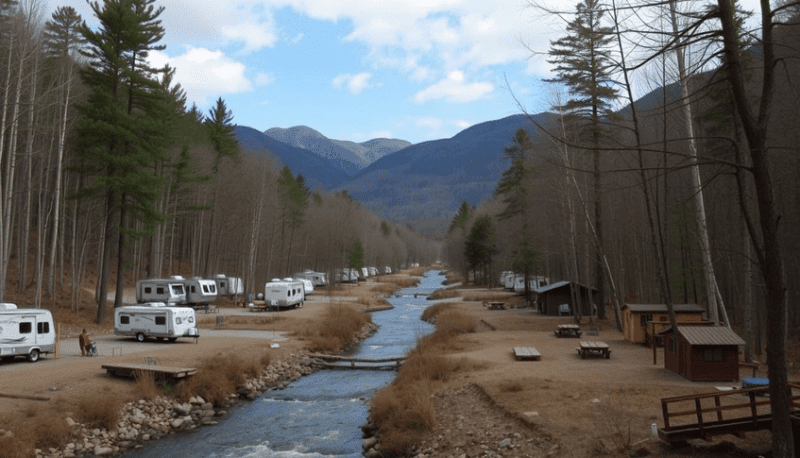Temperature ratings show the extreme conditions a sleeping bag can handle, not just comfort.
A 20-degree Fahrenheit sleeping bag is good for around 30 degrees, especially for women. But, our personal warmth needs are different. Down-filled bags are warm and light, with fill powers like 650, 700, or 800. Synthetic bags are cheaper, keep warm when wet, but are bulkier than down.
Key Takeaways
- Temperature ratings are crucial when selecting a sleeping bag, as they indicate the extreme conditions it can withstand.
- Down-filled sleeping bags offer excellent warmth-to-weight ratio, while synthetic bags are less expensive and perform better when wet.
- Sleeping bag shape, such as mummy, rectangular, or semi-rectangular, offers different trade-offs in terms of warmth, weight, and comfort.
- Personal preferences play a significant role in choosing the right sleeping bag for our needs and activities.
- Understanding the features and construction details of sleeping bags can help us make an informed decision.
Understanding Sleeping Bag Temperature Ratings and Seasonality
Choosing the right sleeping bag is key for outdoor adventures. Temperature ratings are crucial. They tell you how well a bag keeps you warm in different seasons.
How Temperature Ratings Work
Sleeping bag ratings fall into four categories: Comfort Limit, Lower Limit, Extreme Rating, and EN Rating. The Comfort Limit is for when a woman sleeps well. The Lower Limit is for when a man can just barely stay warm. The Extreme Rating is for survival in extreme cold.
Comfort vs. Lower Limit Ratings
Women tend to sleep colder than men. This is because they have a lower metabolism and less muscle. When picking a sleeping bag, think about your own warmth needs and the weather you'll face.
Choosing the Right Rating for Your Needs
It's wise to pick a bag rated 15°F lower than the expected temperature. This way, you'll stay warm even if it gets colder than expected. Here's a guide to seasonal sleeping bags:
| Sleeping Bag Seasonality | Temperature Range |
|---|---|
| One-season (Summer) | Above +5°C (40°F) |
| Two-season (Spring/Summer) | 0 to +5°C (30 to 40°F) |
| Three-season (Spring/Summer/Fall) | -5 to 0°C (20 to 30°F) |
| Four-season (Winter) | -10 to -5°C (15 to 20°F) |
| Five-season (Expedition/High Altitude) | -40 to -10°C (-40 to 15°F) |
Keep in mind, these ratings are from tests. Real-world conditions can differ. Think about your own comfort, activity level, and the place you'll use the bag in to make the best choice.
Down vs. Synthetic: Choosing Your Insulation Type
Choosing the right sleeping bag for outdoor adventures is key. You must decide between down and synthetic insulation. Each has its own benefits and drawbacks, so knowing the differences is crucial.
Down insulation is known for being warm, light, and easy to pack. High-quality down can trap heat well and is very light. But, it loses its insulating power when wet.
Synthetic insulation, like Climashield, keeps some warmth even when wet. This makes synthetic bags great for humid or rainy weather. They're also cheaper than top-notch down but might not last as long or be as light.
| Feature | Down Insulation | Synthetic Insulation |
|---|---|---|
| Warmth-to-Weight Ratio | Excellent | Good |
| Compressibility | Highly Compressible | Less Compressible |
| Performance in Wet Conditions | Reduced Insulation | Maintains Some Insulation |
| Durability | Excellent with Proper Care | May Degrade Over Time |
| Cost | Generally More Expensive | Generally Less Expensive |
The choice between down and synthetic insulation depends on your needs and the weather. Understanding each type's strengths and weaknesses helps you pick the best sleeping bag for your adventures.
How to Choose the Right Sleeping Bag for Any Season
Choosing the right sleeping bag is crucial for outdoor adventures. It's important to know what features are best for each season. Whether you're hiking in summer, camping in fall, or exploring in winter, the right sleeping bag is key to comfort and safety.
Essential Features for Different Seasons
In warmer months, go for lightweight backpacking sleeping bags with lower ratings. These bags offer the right insulation for better air flow. For spring and fall, versatile sleeping bags with moderate ratings work well, adapting to changing weather.
You need a weather-resistant sleeping bag with a higher rating for winter camping. Look for features like draft collars and water-resistant shells to stay warm and dry.
Understanding Weather Conditions
Think about the climate and weather of your camping spots. For mild summer weather, a seasonal sleeping bag with a lower rating is fine. But for colder climates, a winter sleeping bag is essential.
Matching Bag Features to Your Activities
Consider your activities when picking a sleeping bag. For lightweight backpacking, choose an ultralight, compact bag. For car camping, a more durable, spacious bag is better. For weather-resistant conditions, look for bags with water-resistant shells and draft collars.
By focusing on essential features, understanding the weather, and matching bags to activities, you'll find the perfect sleeping bag for any season.
Design Features and Construction Details
Choosing the right sleeping bag is key for outdoor adventures. Look at the design and construction details for comfort and warmth. Each part, from baffles to footboxes, is crucial for staying cozy.
Baffle construction is important for insulation. Continuous horizontal baffles let you adjust insulation for warmth. This is great for changing weather or adjusting warmth at night.
The hood should fit snugly around your head. Adjustable cords ensure a secure fit. Draft collars block cold air and keep you warm.
The footbox design is also key. It can be tight for warmth or roomy for gear. Choose based on your needs and the weather.
Zippers are crucial but often overlooked. Look for anti-snag features for smooth use in cold conditions.
Other features to consider include stash pockets and DWR-treated fabrics. These add convenience and protection from the elements.
Understanding these features helps you choose the right sleeping bag. It ensures comfort and rest, no matter where you go.
| Feature | Benefit |
|---|---|
| Continuous horizontal baffles | Allows customization of insulation placement for optimal warmth |
| Adjustable hood | Helps prevent heat loss around the neck |
| Draft collars | Further block cold air and retain body heat |
| Footbox design | Can be tight and efficient or more roomy for gear storage |
| Anti-snag zippers | Ensure smooth, hassle-free operation |
| Stash pockets | Provide storage for small items |
| DWR-treated shell fabrics | Offer water resistance and protection from the elements |
"The right design features can make all the difference in ensuring a comfortable and restful night's sleep in the great outdoors."
Conclusion
Choosing the right sleeping bag for outdoor adventures is important. We need to think about warmth, weight, how easy it is to pack, and the cost. Knowing the differences between 3-season and 4-season bags helps. So does understanding the pros and cons of down versus synthetic insulation.
Proper sleeping bag care and maintenance is key to making it last longer. Budget-friendly sleeping bag options, especially synthetic ones, are great for beginners. Looking into sleeping bag brands and reviews helps us pick the best one for our next trip.
A good sleeping bag is an investment in our comfort and safety outdoors. By carefully choosing, our sleeping bag will be a trusted friend for many adventures.
FAQ
Q: What factors should we consider when choosing a sleeping bag?
A: When picking a sleeping bag, think about the temperature rating, insulation type, weight, and shape. These details help decide if the bag is right for different seasons and activities.
Q: How do temperature ratings work, and how do we choose the right rating for our needs?
A: Temperature ratings come from EN 13537 testing. They include Comfort Limit, Lower Limit, and Extreme ratings. These are survival limits, not comfort levels. It's best to pick a bag rated 15°F lower than expected temperatures for comfort and safety.
Q: What are the differences between down and synthetic insulation, and how do we choose between them?
A: Down insulation is light and warm but loses warmth when wet. Synthetic insulation dries faster and keeps some warmth when wet, but it's heavier and less durable. Look for down with a fill power of 600 to 900 for better quality. Some down is ethically sourced, and there are treatments to make it water-resistant.
Q: How do we choose the right sleeping bag for different seasons and activities?
A: For summer, choose lightweight bags with low temperature ratings and good airflow. Spring and fall need versatile bags with moderate ratings. Winter bags should have high ratings, draft collars, and water-resistant shells. Consider the climate and weather of your camping spot, and the specific needs of your activities.
Q: What design features and construction details should we look for in a sleeping bag?
A: Look at the baffle construction for down distribution and warmth. Hoods should fit well with adjustable cords, and draft collars prevent heat loss. Footboxes can be tight for efficiency or roomy for gear. Zippers should have anti-snag features, and stash pockets are handy for small items. Shell fabrics may have DWR treatments for water resistance.
FARLAND 20℉ Sleeping Bags for Camping and Hiking
Stay warm and cozy on your outdoor adventures with our lightweight and compact sleeping bags
Product information
$49.99 $31.99
Product Review Score
4.47 out of 5 stars
221 reviewsProduct links
Waterproof Sleeping Bag for All Seasons - Blue
Stay cozy and dry no matter the weather with this versatile sleeping bag designed for every outdoor adventure
Product information
$19.49
Product Review Score
4.87 out of 5 stars
58 reviewsProduct links
REDCAMP Flannel Sleeping Bag for Camping Adventures
Stay cozy and warm under the stars with this soft and durable sleeping bag made for all your outdoor adventures
Product information
$45.99 $42.99
Product Review Score
4.13 out of 5 stars
208 reviewsProduct links
3-Season Lightweight Sleeping Bag for Camping
Stay cozy and comfortable on your outdoor adventures no matter the weather
Product information
$24.99
Product Review Score
4.76 out of 5 stars
199 reviewsProduct links
DISCLAIMER
This document is provided for general information purposes only and should not be relied upon as providing legal advice, technical, or specific operational guidance to the reader, whether as to the practices described in the document or the applicable legal requirements and regulations. bestcampingdeals.com expressly disclaims any responsibility for liability arising from or related to the use or misuse of any information in this document.
